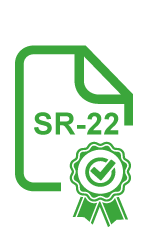DUI defense lawyers and DWI defense attorneys are often asked why they are taking a particular drunk driving case to trial when a breath analysis machine has produced a reading above the legal limit. What these drunk driving lawyers know, and what they hope to educate their juries about, is that the breath testing machines that are used in DUI and DWI arrests are subject to error even in the best of circumstances. Breath testing in drunk driving cases is far from perfect.
Breath testing in DUI cases dates back to 1937 when Rolla Harger invented the “Drunkometer”. This machine gave birth to an industry that has witnessed many new designs, each trying to improve on the reliability of its predecessor. However, even in our present era, every single breath-testing device is subject to mistakes. All breath-testing machines used in DUI and DWI cases make certain assumptions about the people being tested that may or may not be true. All of the drunk driving breath-testing machines are subject to human error, maintenance problems, interference from outside sources (such as radio frequency interference), and internal malfunctions.
DUI breath testing is an indirect way of determining blood alcohol content (BAC) or blood alcohol level (BAL). Many states have tried to get around the obvious problems associated with converting a breath alcohol level to a blood alcohol level by outlawing driving above a certain limit as determined by either a blood or breath test. DUI and DWI lawyers in most states confront laws that make it illegal to drive while under the influence of alcohol or to drive with a blood or breath alcohol level of .08% or higher. The former is based on actual impairment; the latter is based only on the subject’s alcohol level, without regard to whether or not they are actually feeling the effects of drinking alcohol.
Breath testing for alcohol is typically accomplished either on a roadside test prior to arrest, or on a more stationary machine at the jail following an arrest. The portable device, which is a little bigger than a pack of cigarettes, is called a Preliminary Alcohol Screening (PAS) test, or Preliminary Breath Testing (PBT) device. In most states, the officer conducting the investigation is supposed to tell the DUI or DWI suspect that blowing into the PAS device is optional. In practice, this is done inconsistently, at best.
The technology used in the stationhouse breath testing devices is slightly more reliable, in that they do typically have slope detectors to guard against mouth alcohol contamination, but are subject to human, internal, and external error as well. The stationhouse breath testing machines may use a fuel cell, or an infrared system to measure alcohol levels. Where an infrared system is used, the breath sample is blown into a chamber, and an infrared beam is shot from one end to the other. The beam is absorbed by alcohol molecules (and other molecules in the same spectrum, unfortunately), and the amount the beam is diminished as it passes from one end of the sample chamber to the other is measured, and is expressed in a numeric value. The greater the amount of light that is absorbed from one side of the chamber to the other, the higher the reading on the machine.
Unfortunately for those who stand accused of DUI, DWI, or any other drinking and driving-related offense, the ways in which the breath testing machines can be in error are many indeed. They include problems with mouth alcohol causing artificially high results, non-specificity to alcohol (where other compounds are mistaken for alcohol by the machine), radio frequency interference, calibration errors, human error, and more.







